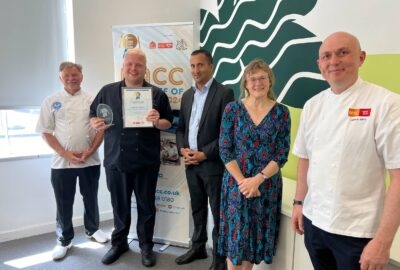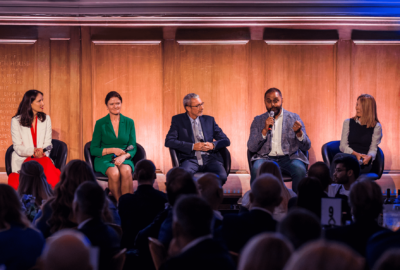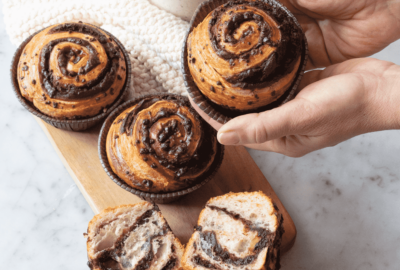Venison is one of the most popular dishes on the menu since it was introduced at East Lancashire Hospitals NHS Trust (ELHT) a year ago, with 48% of patients selecting it from a choice of six dishes when available. The biggest seller is venison and mushroom pie which was featured on Channel 4’s “Food Unwrapped”, followed by venison stew and gamekeeper’s pie.
Tim Radcliffe, Facilities Manager from ELHT started his hospitality career in a restaurant and recently won this year’s “Hospital Caterer of the Year” award by the Hospital Catering Association (HCA). His ethos is to put quality restaurant food onto hospital menus for patients and staff. “We have a fresh cook model, so we needed to obtain raw meat,” he explains. Initially he sourced the venison through his local butcher from the highlands of Scotland, but at the end of 2020, the Soil Association approached him. “They said they had a connection with Forestry England, and would I be interested in having a chat with them and Highland Game about obtaining venison more locally,” he said.
The conversation led to a lasting collaboration between Forestry England and Highland Game to supply the Trust with venison from the Forest of Bowland, 10 miles away.
Forestry England, which manages England’s 1,500 forests and woodlands, culls deer as part of its sustainable forest management programme. Nigel Foster, Lead Wildlife Manager, says “The successful collaboration we have with ELFT, and Highland Game means we have a resilient and ethical outlet for our venison.”
Both Highland Game and Forestry England are interested in working with other hospitals and catering outlets. Nigel says, “This model is a safe, efficient way of getting venison more widely used on menus and we are aiming to grow this partnership to include other hospitals, schools and institutions.”
As an offshoot of the collaboration, ELHT introduced wild boar from the Forest of Dean on menus in April this year featuring a pie using wild boar mince. In addition, Tim hopes to work with a farm 35 miles away which rears water buffalo. “I’m looking at how we implement it onto the menu to give patients choice,” he says.
Staff eat the same meals as the patients, so when ELHT first introduced venison, they visited every ward, giving team members the opportunity to sample dishes before they were added to the menu, so they were able to tell patients about them when they launched. They also introduced a takeaway frozen version for staff to take home.
Tim points out the advantages of venison. “It’s high in protein, low in fat and it’s important for the ecological system – venison has no natural predators. All the prices of other meat such as chicken, pork, lamb have gone up, but I haven’t had an increase in venison in three years and there are no plans for an increase as there’s a glut of it. The difference in price between standard protein meat options and venison is becoming smaller.”
Although, venison is ELHT’s most expensive single purchase, other dishes cost a lot less, “so it all balances out,” says Tim. “We have 110 different items on the menu over a 14-day cycle, with 55% of dishes vegetarian. The plant-based dishes are there but we need to give quality choice to patients.”
The venison is listed on the menu as “British Forest of Bowland Venison”. Tim says “Patients’ expectations have changed, and they expect a story behind their food. Provenance does matter and how you describe it.”


